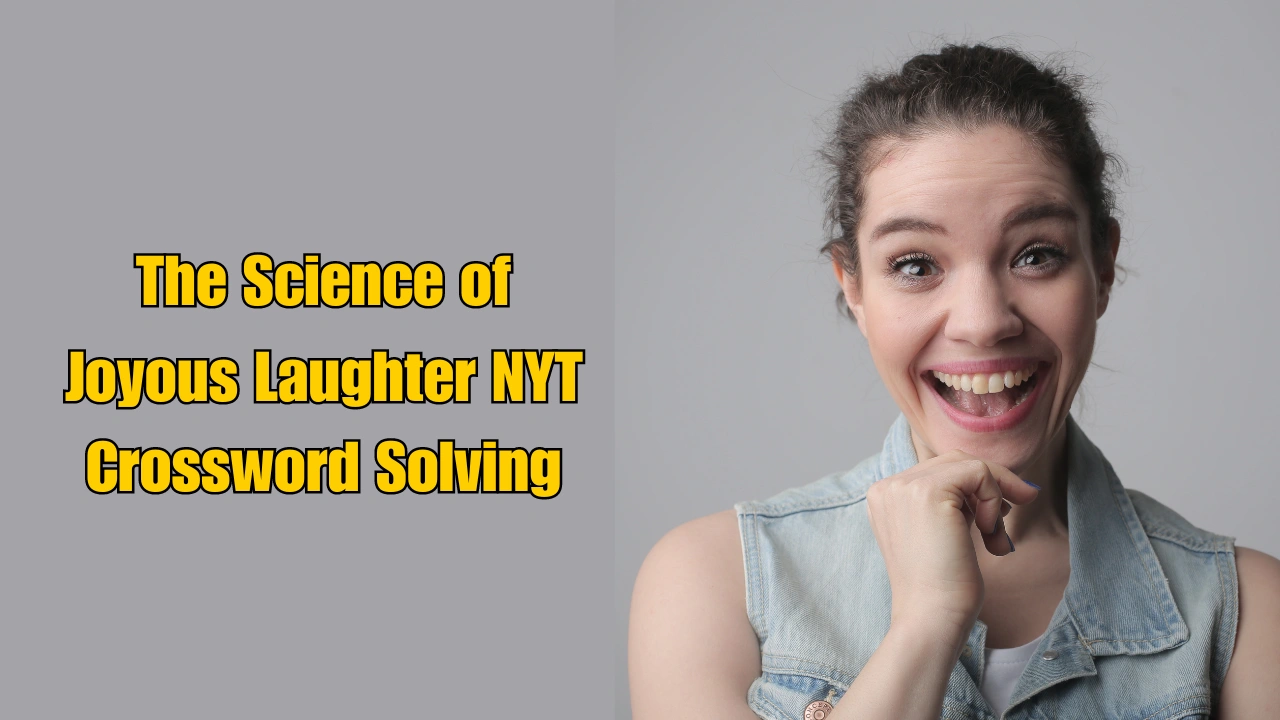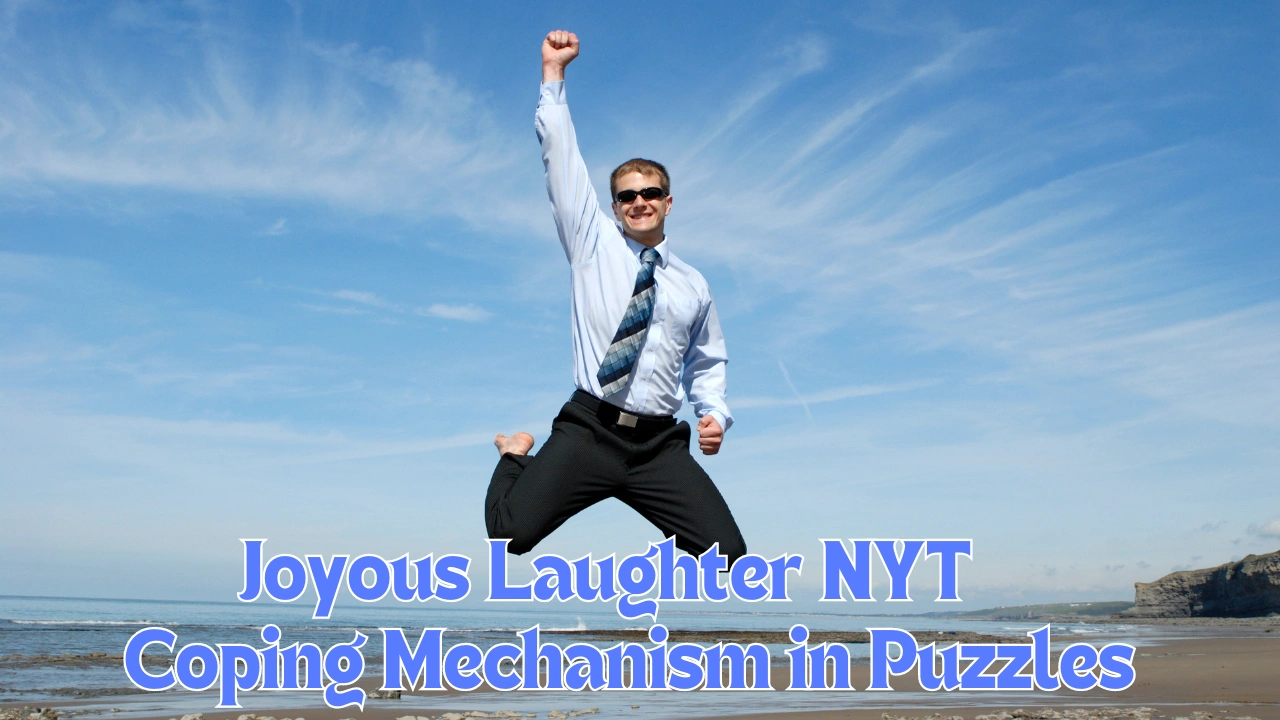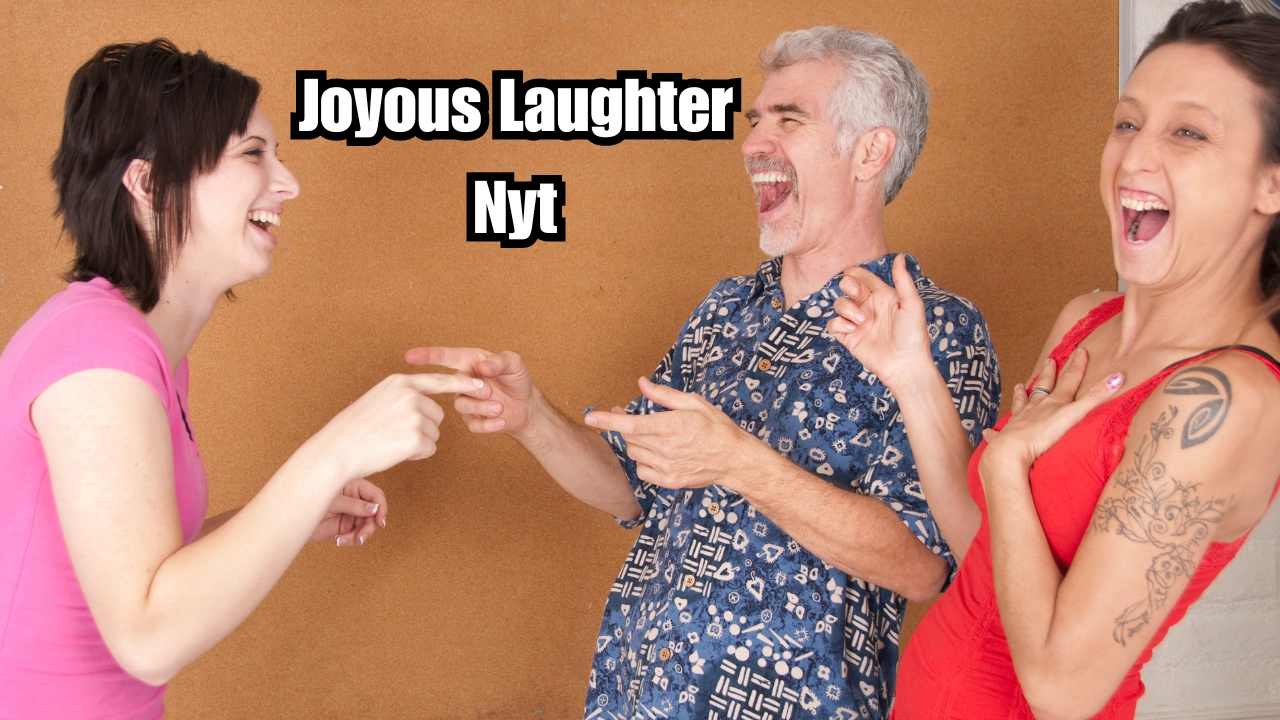In the world of crossword puzzles, the New York Times (NYT) crossword is renowned for its clever clues and challenging wordplay. One particular clue that has caught the attention of many puzzle enthusiasts is joyous laughter. While this clue might seem straightforward at first, its deeper meaning and connection to the puzzle-solving experience make it an interesting case study. Let’s explore the significance of joyous laughter NYT within the puzzle context and the broader world of crossword solving.
What Does Joyous Laughter NYT Crossword?
In crossword puzzles, joyous laughter nyt often leads solvers to words associated with happiness, amusement, and delight. A common answer to this clue is “MIRTH,” which is a five-letter word meaning great merriment or laughter. This solution encapsulates the essence of joyous laughter—a deep, resonating emotion that spreads easily and lightens the mood.
Mirth has appeared several times in the NYT crossword, showcasing how the puzzle consistently taps into the theme of happiness and emotional expression. The use of this clue not only tests a solver’s vocabulary but also plays with their understanding of context and emotion.
The Role of Joy in Crossword Solving
Crossword solving, especially in the context of the New York Times puzzles, is often described as a rewarding and joyful experience. The sense of accomplishment after solving a challenging clue, like joyous laughter NYT, brings a wave of satisfaction that many compare to a good laugh. For solvers, completing a crossword is akin to experiencing a moment of joyous laughter—it’s lighthearted, mentally stimulating, and often shared with others in puzzle-solving communities.
Solvers often describe the joy that comes from a clever clue, especially when the answer brings an “aha!” moment. Clues like joyous laughter are particularly memorable because they evoke positive feelings and remind solvers that puzzles are not just about brainwork—they’re also about having fun.
The Science of Joyous Laughter NYT in Crossword Solving
Just as laughter triggers feel-good chemicals in the brain, solving a puzzle also stimulates the release of endorphins. Researchers have found that engaging in activities like solving crosswords, especially when a clue like joyous laughter appears, activates areas of the brain associated with reward and pleasure. When solvers crack the answer, it brings a similar sense of joy to experiencing genuine laughter.

Laughter, as explored in various New York Times articles, is known to reduce stress and improve overall well-being. Similarly, crossword solving has been shown to boost cognitive function, improve mood, and provide a healthy distraction from life’s stresses. Clues like “joyous laughter” remind us of the emotional and intellectual benefits of this beloved pastime.
The Social Aspect of Crosswords and Laughter
Crosswords are often a shared activity, much like laughter. People solve puzzles together, exchange clues, and discuss their favorite wordplay. This shared experience can foster a sense of community, just as joyous laughter brings people closer. In fact, the NYT crossword puzzle has a large and devoted community of solvers who regularly discuss clues, including “joyous laughter,” in forums and online groups.
When solvers encounter a tricky clue that leads to a fun or surprising answer, it’s not uncommon for them to share that experience with friends or fellow puzzlers. Just as laughter spreads joy, crossword-solving spreads intellectual and emotional satisfaction. The clue joyous laughter NYT becomes a point of connection, sparking conversation and camaraderie among solvers.
Joyous Laughter as a Coping Mechanism in Puzzles
Solving crosswords can also be a coping mechanism during stressful times. When life feels overwhelming, sitting down with a puzzle offers a moment of respite, much like how laughter provides relief from stress. Clues like joyous laughter NYT bring a touch of lightheartedness to the solving experience, making the process enjoyable rather than purely challenging.

According to The New York Times, laughter has been shown to help people deal with anxiety, grief, and depression. Similarly, crossword puzzles provide a mental escape, offering solvers a chance to focus on something positive and rewarding. The connection between laughter and puzzles is clear—both are tools for navigating life’s difficulties with a smile.
The Long-Term Benefits of Solving Puzzles with Joy
Here is a table outlining the long-term benefits of joyous laughter in the context of crossword puzzles and mental well-being:
| Long-Term Benefit | Description |
|---|---|
| Reduced Stress | Regular laughter lowers levels of cortisol, the body’s stress hormone, which helps in reducing stress and anxiety over time. |
| Improved Cognitive Function | Engaging in laughter and solving puzzles stimulates the brain, enhancing memory, problem-solving skills, and overall cognitive function. |
| Enhanced Mental Resilience | Joyous laughter fosters emotional resilience, helping individuals cope better with difficult situations and reducing the risk of mental health issues. |
| Strengthened Immune System | Laughter has been shown to boost immune function by increasing the production of antibodies and enhancing overall physical health. |
| Improved Cardiovascular Health | The physical act of laughing improves circulation and increases oxygen intake, benefiting heart health and reducing the risk of cardiovascular diseases. |
| Increased Social Bonds | Laughter, particularly in shared settings like puzzle-solving communities, strengthens social connections and fosters a sense of belonging. |
| Positive Outlook on Life | Individuals who laugh more often tend to have a more optimistic view of life, leading to greater life satisfaction and happiness. |
| Lower Risk of Cognitive Decline | Regular mental stimulation from activities like crossword puzzles and joyous laughter reduces the risk of cognitive decline, including conditions like dementia. |
This table highlights the profound and lasting benefits of incorporating both joyous laughter and mental activities, like crossword solving, into your daily routine for overall well-being.
Conclusion
In conclusion, joyous laughter NYT is a clue that resonates deeply with crossword solvers. It represents not just a moment of humor or happiness, but the joy that comes from intellectual achievement and shared experiences. Whether you’re solving a puzzle on your own or with friends, encountering clues like “joyous laughter” reminds us that puzzles, like laughter, are meant to be enjoyed.
As you continue to solve crosswords, remember that each clue, especially ones like joyous laughter, offers more than just a challenge—it offers a moment of joy, connection, and satisfaction. So the next time you come across this clue, let it bring a smile to your face, knowing that you’re engaging in an activity that enriches both your mind and spirit.
Frequently Asked Questions
How can joyous laughter help during difficult crossword clues?
When faced with difficult crossword clues, joyous laughter—whether it’s from solving a humorous or clever clue—can reduce frustration and enhance problem-solving. The emotional release from laughing can help solvers approach puzzles with a clearer, more positive mindset.
Why does the NYT crossword use emotional themes like joyous laughter in its clues?
The NYT crossword often incorporates themes that evoke emotions to engage solvers on a deeper level. Clues like “joyous laughter” add variety to the puzzle, encouraging solvers to think beyond literal answers and tap into emotional associations.
How can joyous laughter improve puzzle-solving skills?
Joyous laughter releases stress and promotes relaxation, which can improve cognitive functions like memory and problem-solving. By approaching puzzles in a positive emotional state, solvers may find themselves more creative and resilient when tackling challenging clues.
Can crossword-solving communities experience joyous laughter together?
Yes, crossword-solving communities often share humorous or clever clues, like “joyous laughter,” leading to shared moments of joy. Solvers connect over the experience of finding tricky answers, which can foster a sense of camaraderie and collective laughter.




